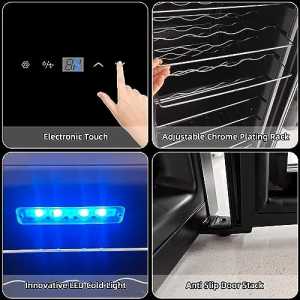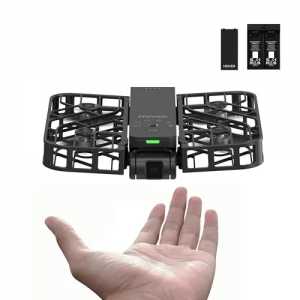
The Role Of Wheelbarrows In Landscaping, Gardening, And Heavy-Duty Work

Wheelbarrows: Evolution, Recent Developments, and Future Innovations
Introduction to Wheelbarrows
Wheelbarrows have been an essential tool in construction, agriculture, and gardening for centuries. Their simple yet effective design, consisting of a wheel, handles, and a carrying tray, has made them indispensable for transporting materials such as soil, gravel, and concrete. Over the years, technological advancements have enhanced their efficiency, durability, and ease of use. As industries move toward automation and smart technology, wheelbarrows are also undergoing significant transformation. This blog explores the recent developments, upcoming innovations, and the future of wheelbarrows beyond 2023.
Recent Developments in Wheelbarrows (Post-2023)
- Electric Wheelbarrows
One of the biggest advancements in wheelbarrow technology is the introduction of electric wheelbarrows. These battery-powered models significantly reduce the physical strain on users, making them ideal for construction workers, landscapers, and farmers. Equipped with powerful motors, electric wheelbarrows enhance maneuverability and efficiency.
- Recent models introduced in 2023-2024 have seen improvements in battery life, with lithium-ion batteries allowing extended operation times.
- Enhanced load-bearing capacities now range from 200 to 500 lbs, catering to different industrial and domestic needs.
- Brands such as Makita and Muck-Truck have introduced smart electric wheelbarrows with speed control and automatic braking systems for enhanced safety.
- Self-Balancing Mechanisms
The integration of gyroscopic technology in wheelbarrows has been another game-changer. Self-balancing wheelbarrows reduce the risk of tipping over, especially on uneven surfaces, making them safer and more reliable for users.
- Companies are developing wheelbarrows with adjustable weight distribution, ensuring stability while carrying heavy loads.
- These models are particularly beneficial for elderly gardeners and laborers who may struggle with traditional manual wheelbarrows.
- Smart Wheelbarrows with IoT Integration
With the increasing adoption of the Internet of Things (IoT) in various industries, wheelbarrows are now equipped with smart sensors and connectivity features.
- Recent models feature load sensors that alert users when they exceed the recommended weight limit, preventing overloading and potential accidents.
- GPS tracking allows businesses to monitor wheelbarrow usage and prevent theft.
- Bluetooth connectivity and mobile apps enable users to control wheelbarrow speed and performance remotely.
- Use of Sustainable Materials
Environmental concerns have led to the development of wheelbarrows made from sustainable and recycled materials.
- Post-2023, companies are manufacturing wheelbarrows with reinforced bioplastic trays and eco-friendly rubber tires.
- The use of lightweight aluminum and composite materials has made modern wheelbarrows more durable while reducing carbon footprints.
Learn More :https://tinyurl.com/ycku6er7
Upcoming Developments in Wheelbarrows
- Autonomous Wheelbarrows
The next phase in wheelbarrow evolution is automation. Self-driving wheelbarrows with AI-driven navigation systems are expected to enter the market soon. These autonomous models will revolutionize industries by eliminating manual labor in transporting materials.
- Equipped with LiDAR sensors and AI-powered pathfinding, these wheelbarrows can follow pre-programmed routes.
- Voice-controlled or app-controlled features will allow users to direct wheelbarrows hands-free.
- Companies are testing prototypes for agricultural use, where wheelbarrows can autonomously transport harvested crops from the field to storage.
- Solar-Powered Wheelbarrows
With sustainability becoming a priority, future wheelbarrows may integrate solar panels to power electric motors, reducing the reliance on batteries.
- Solar-powered models will be particularly useful for remote locations where electricity access is limited.
- These wheelbarrows will have regenerative charging systems, allowing them to operate longer without frequent recharging.
- Lightweight and Ergonomic Designs
Manufacturers are focusing on improving the ergonomic design of wheelbarrows to enhance comfort and usability.
- Future models will feature adjustable handle heights to accommodate different user preferences.
- Ultra-lightweight materials, such as carbon fiber and reinforced polymers, will be used to reduce weight without compromising strength.
- Shock-absorption technology in wheels will make wheelbarrows easier to maneuver on rough terrain.
The Future of Wheelbarrows
- Integration with Robotics and AI
Robotics and AI will play a major role in the future of wheelbarrows. The combination of robotic arms and autonomous movement will allow wheelbarrows to load and unload materials without human intervention.
- AI-powered wheelbarrows will have predictive maintenance features, notifying users when parts need replacement.
- Robotic-assisted wheelbarrows will improve efficiency in industries such as mining, construction, and landscaping.
- Expansion into Different Industries
While wheelbarrows are traditionally used in construction and agriculture, their applications are expanding into new sectors such as logistics and disaster relief.
- Smart wheelbarrows could be used in warehouses to transport inventory autonomously.
- Disaster response teams may use high-tech wheelbarrows for carrying medical supplies and debris removal in emergency zones.
- Enhanced Durability and Performance
Future wheelbarrows will be designed to withstand extreme conditions, making them more versatile and long-lasting.
- Weather-resistant coatings will protect against rust and corrosion.
- High-performance tires will be able to adapt to different terrains, including sand, snow, and rocky landscapes.
- Improved suspension systems will provide smoother rides, reducing strain on users and minimizing material spillage.
- Customization and Modular Features
Customization will become a major trend in the wheelbarrow industry, allowing users to modify features based on their specific needs.
- Modular attachments will enable users to switch between different tray sizes and wheel configurations.
- Quick-release wheels will allow easy maintenance and replacement.
- Smart displays on wheelbarrows will provide real-time weight measurements and navigation assistance.
Conclusion
The humble wheelbarrow, a tool that has been around for centuries, is undergoing a technological transformation. With advancements in electric power, self-balancing technology, IoT integration, and sustainable materials, wheelbarrows are becoming more efficient and user-friendly. The future promises autonomous, AI-driven, and solar-powered wheelbarrows that will revolutionize industries from construction to logistics. As technology continues to evolve, wheelbarrows will no longer be seen as simple hand tools but as smart, adaptable machines that enhance productivity and efficiency across various sectors.
Connect With US
Author Bio
Automation and process control use advanced tech like PLCs, SCADA, and sensors to boost efficiency, accuracy, and safety in engineering and industries.
Article Comments
No Comments!
At present there are zero comments on this article.
Why not be the first to make a comment?
Similar Articles
Search Pages
User Upgrade
account to full use of editor,
Including hyperlinks
Article Categories
There are zero sub-categories in this parent category.
There are zero sub-categories in this parent category.

















